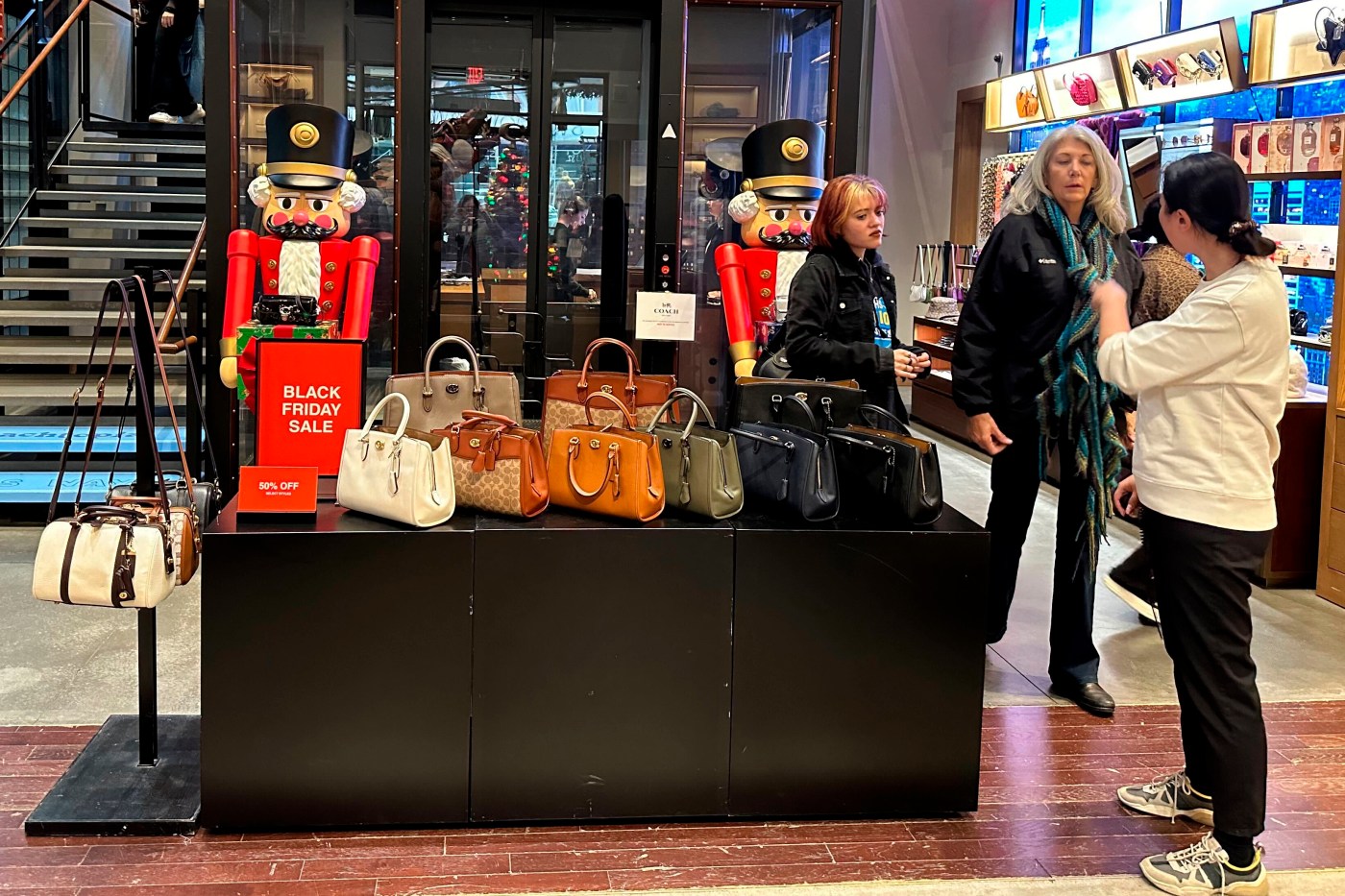
Massachusetts retailers expect drop in holiday shopping sales with shorter season, high costs
A shorter holiday season combined with continued higher costs, interest rates and lower consumer confidence has the Retailers Association of Massachusetts predicting just a modest 1.5% increase in local shopping sales.
Retailers released their annual prediction on Wednesday, a week before Thanksgiving falls on the latest date it can, meaning shoppers will have just four weekends to flock to stores for holiday gift buying instead of five.
“The shorter calendar this year makes weekend trips to Main Street shopping districts a challenge versus last year,” RAM President Jon Hurst said in a release. “The short season, along with higher costs of living for consumers and higher operating costs for small businesses, make it more important than ever that we all work harder to protect, promote, and preserve our Main Streets and our important local shopping districts.”
The prediction for holiday sales in the Bay State is lower than the projections of 2.5-3.5% that the National Retail Federation has forecast across the country, factoring in all types and sizes of sellers whereas the RAM survey is based solely on small businesses.
Holiday sales last year jumped 3.8% in Massachusetts, which Hurst called a “pleasant surprise,” in an interview with the Herald. He pointed to inflation not being as bad as in 2023 and that last year’s haul doesn’t indicate an increase in transactions.
Challenges persist this year, Hurst said.
“Every small business, to be successful and to be in the black, you need either higher sales or lower costs,” he told the Herald. “Unfortunately, in this environment, they’re going in the opposite direction – the wrong direction. Sales are relatively down yet costs are up.”
The National Retail Federation said last month its 2024 forecast indicates that shoppers will make $979.5 billion to $989 billion worth of purchases in November and December, which would represent a 2.5%-3.5% increase over the same two-month period a year ago.
The trade group calculates its forecast using government figures and economic indicators such as employment, wages, consumer confidence, disposable income, consumer credit, previous retail sales and weather.
The numbers exclude sales at automobile dealers, gasoline stations, and restaurants.
“Interest rates are still a little higher than they were in recent memory,” National Retail Federation CEO and President Matt Shay said during an October call with reporters. “Consumers do have those interest rates and the lingering inflation on their minds. So we expect that consumers will continue to be more price-conscious and pragmatic in their spending decisions.”
The Associated Press contributed to this report


